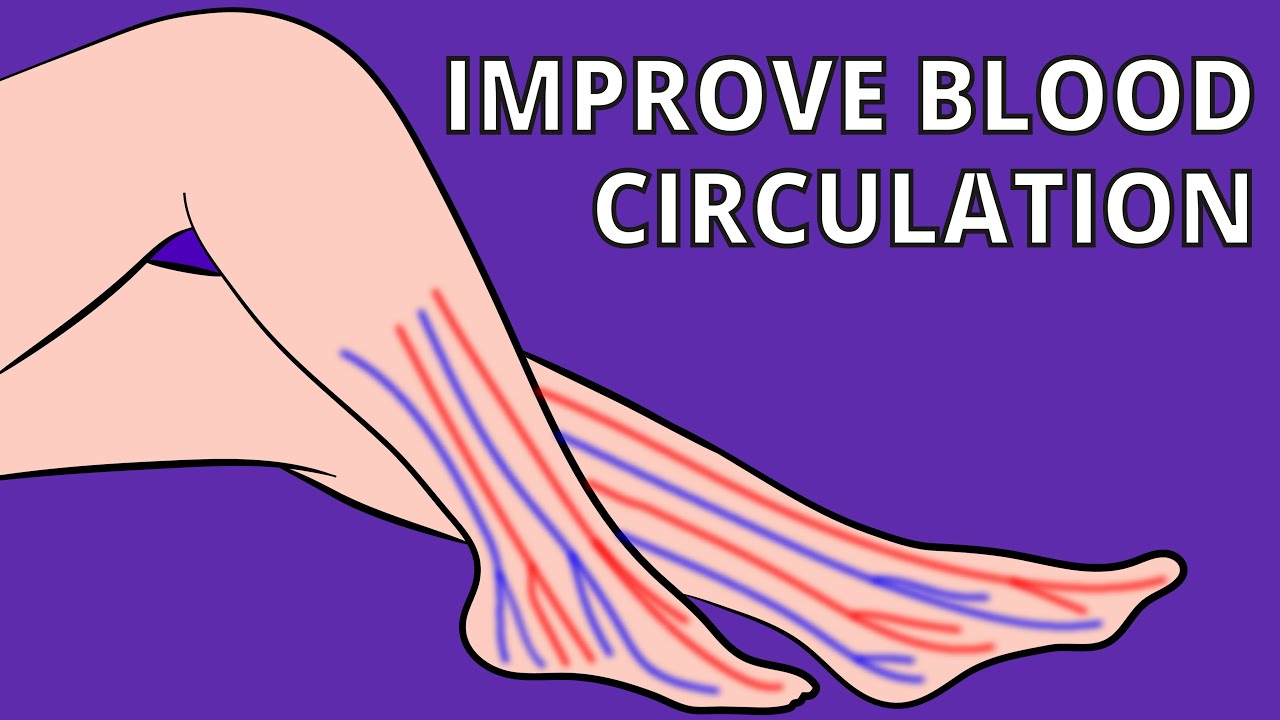QUOTES
How to Improve Your Circulation

If you have poor circulation, then you probably suffer from symptoms like cold hands and feet, tingling extremities, and overall discomfort. But with a few changes to your daily habits, you can reverse course and discover what it means to live well.

What Causes Poor Circulation?
The body’s circulatory system is responsible for sending blood, oxygen, and other nutrients to the various parts of your body. When blood flow is compromised or reduced, symptoms of poor circulation emerge in the legs, arms, and other areas of the body.
However, poor circulation is not the underlying issue. It’s merely a telltale symptom. Common causes of poor circulation include:
- PAD. Peripheral artery disease, or PAD, is a circulatory condition that causes the blood vessels and arteries to narrow in the body. This can lead to poor circulation in the legs. Symptoms include numbness, tingling, and nerve damage.
- Blood clots. Small blood clots can block the flow of blood and lead to circulation problems. They can be especially dangerous when they break away – potentially passing to the heart or lungs, where they can be deadly.
- Diabetes. Individuals with diabetes may experience cramping in the legs, pain in the calves and thighs, and/or reduced sensation in the extremities.
- Obesity. Carrying around extra weight on your body can put pressure on your blood vessels and create circulatory issues.
- Raynaud’s disease. If you have chronic cold hands and feet, discoloration of toes and fingers, and are highly sensitive to cold temperatures, you may have something known as Raynaud’s disease.
4 Tips to Improve Your Circulation
Getting to the bottom of what’s causing your poor circulation is the first step. The second step is to implement healthy habits that promote better circulation throughout the body. Here are a few helpful tips:
- Get Moving
Your body needs to move to facilitate proper circulation. Here are some ways to do that:
- Try to get at least 30 minutes of moderate-to-vigorous exercise per day. This may include swimming, running, cycling, or playing a sport like basketball.
- Upgrade from a traditional desk to a standing desk and aim to stand up for at least two or three hours per workday. Check out the BTOD.com Facebook page to see how standing desks work.
- Make it a point to take the stairs instead of an elevator (whenever possible).
- Control Blood Pressure
When you go to the doctor and have your blood pressure taken, the nurse is essentially measuring the force that the blood in your body exerts against the vessel walls of your circulatory system. With more pressure, circulation declines.
The longer high blood pressure is present in the body, the more likely it is that there will be long-term effects on your heart and other vital organs and arteries.
Do your best to control your blood pressure by reducing stress, exercising regularly, and following the other tips outlined in this article.
- Stay Hydrated
It’s estimated that as many as three out of every four Americans are dehydrated. The bad news is that this is often a cause of poor circulation. The good news is that it can be remedied.
Men should consume 131 ounces of water per day, while women can typically get away with just 95 ounces. If you’re having trouble drinking enough water, you can look for additional ways to increase your fluid consumption.
This includes milk, tea, broth, and citrus fruits. You can also try adding flavoring to your water to make it more appealing.
- Improve Diet
In addition to staying hydrated, consuming the right diet can improve circulation and blood flow in your body. This means eliminating as many processed foods from your diet as possible, while also incorporating a balanced array of fresh foods. This includes lean meat, fruits, vegetables, and whole grains.
Foods that specifically increase circulation include cayenne pepper, pomegranate, onions, cinnamon, garlic, fatty fish, beets, turmeric, leafy greens (like spinach), citrus fruits, walnuts, tomatoes, berries, and ginger.
Get Your Life Back on Track
Poor circulation is not only uncomfortable and painful, but it can also be stressful. Anytime there’s something serious going on with your heart or circulatory system, there’s a certain level of fear and frustration involved.
But the good news is that, in most cases, poor circulation isn’t a sign of a serious issue. It usually has a detectable cause that can be dealt with through a combination of medications, simple procedures, and healthy habits.
The key is to be proactive and to deal with it now…rather than later!

